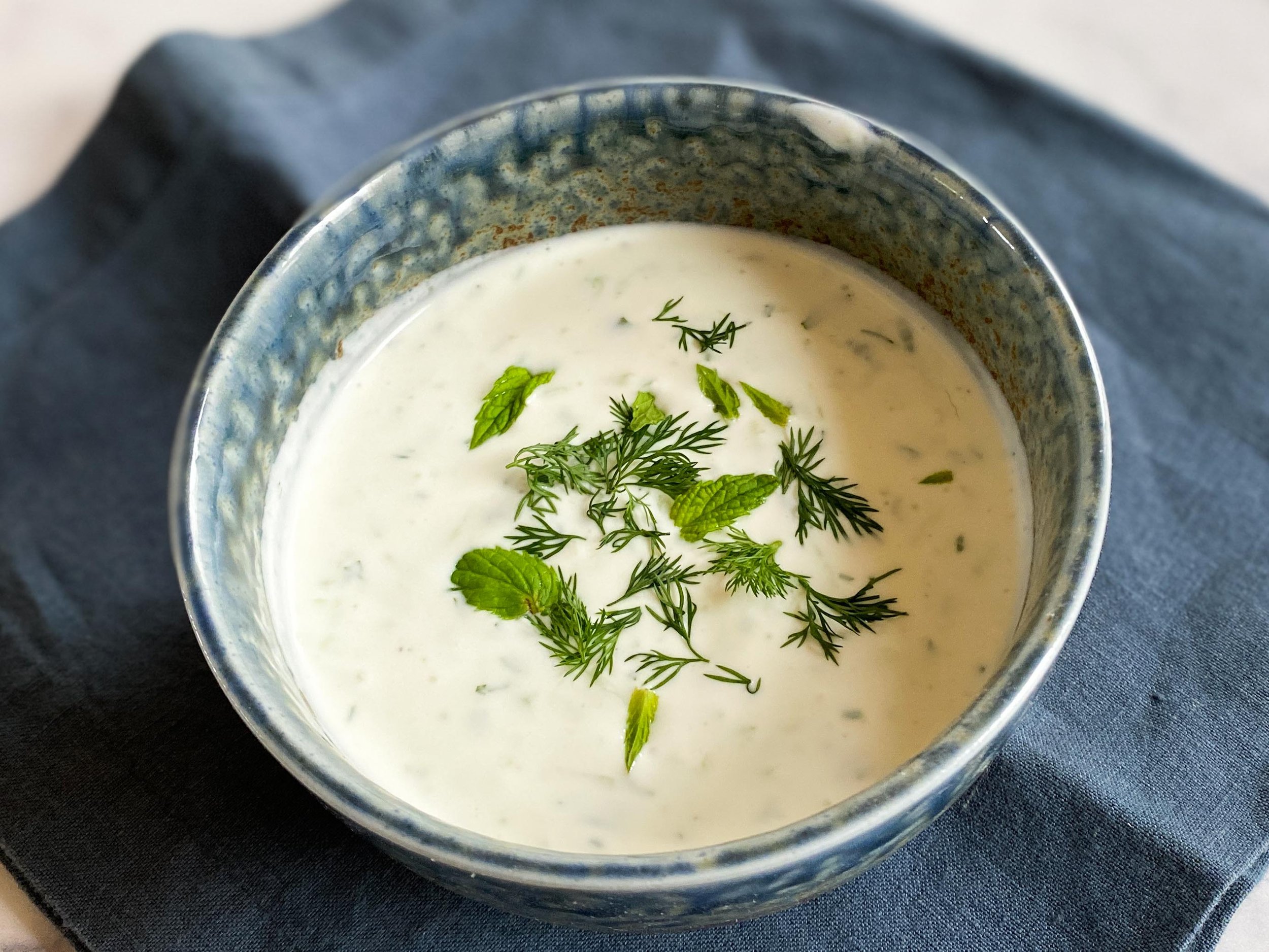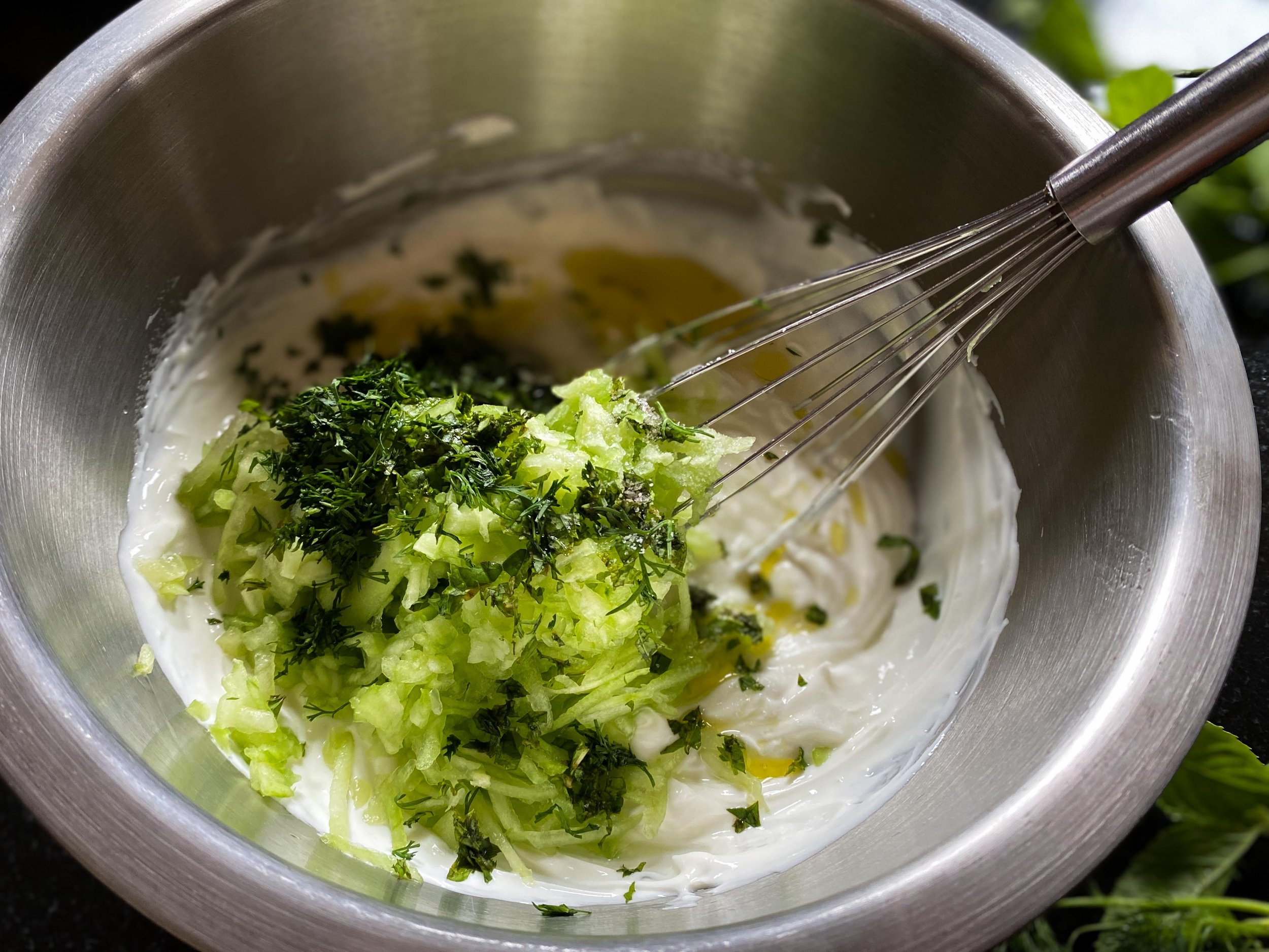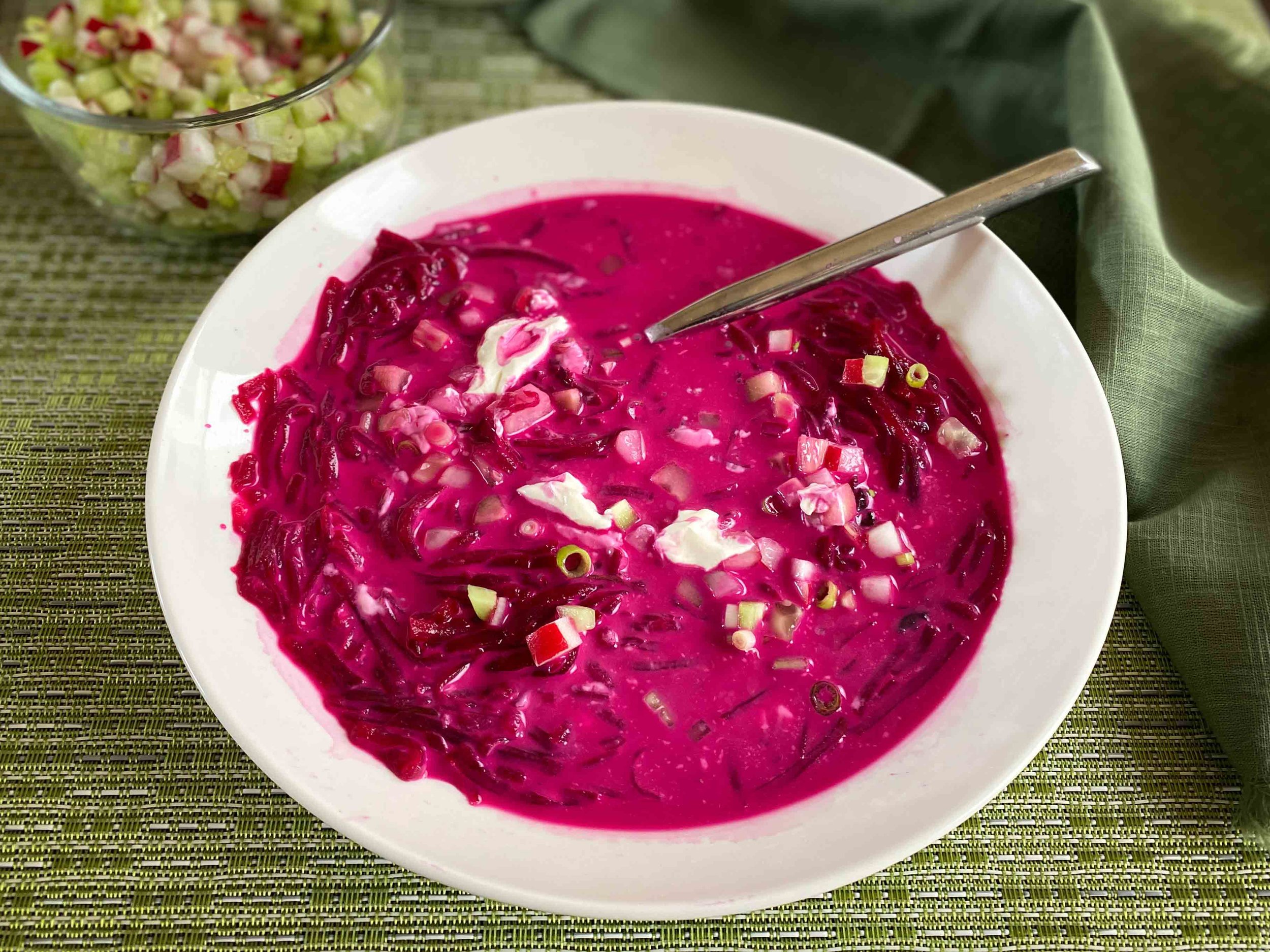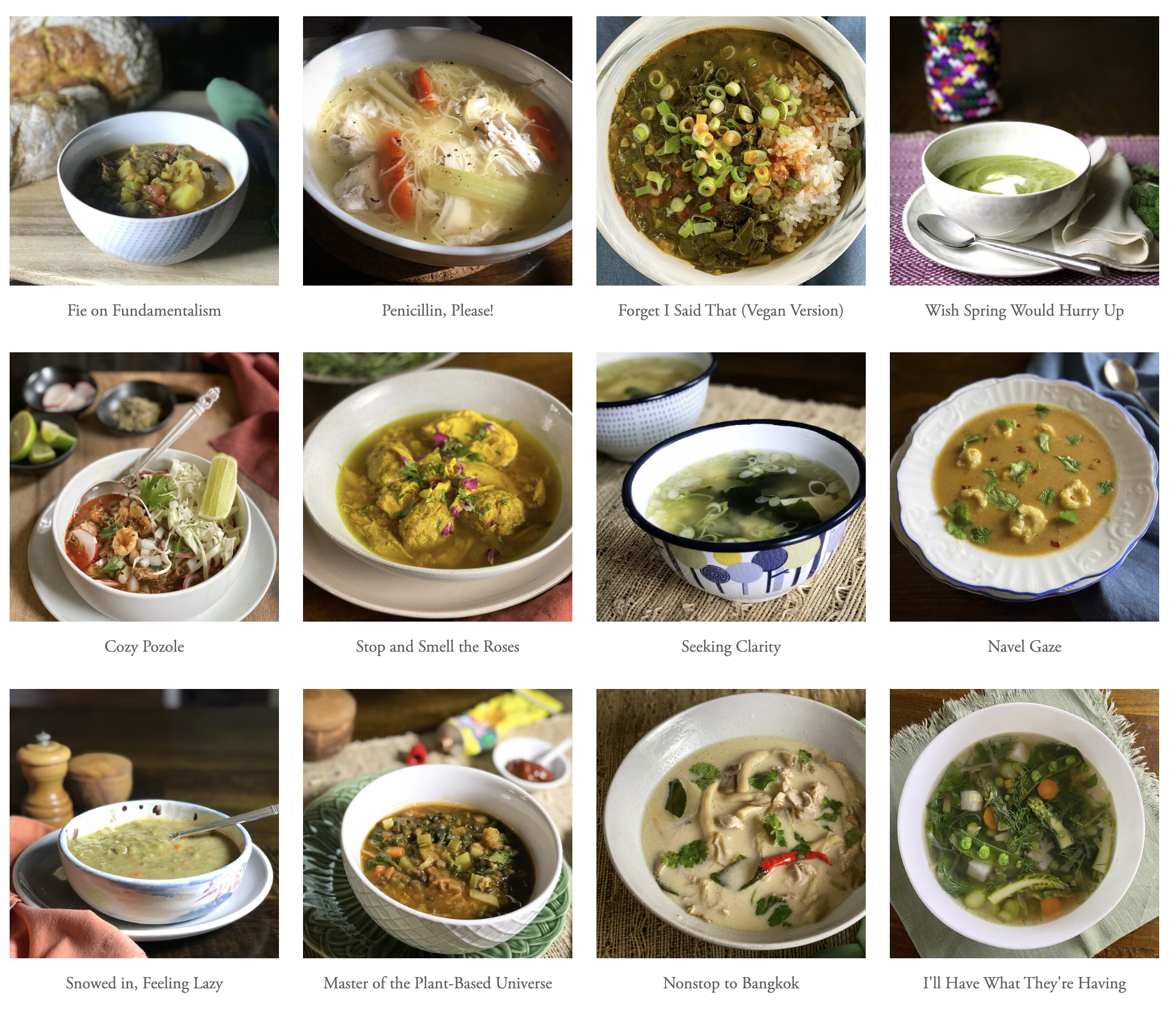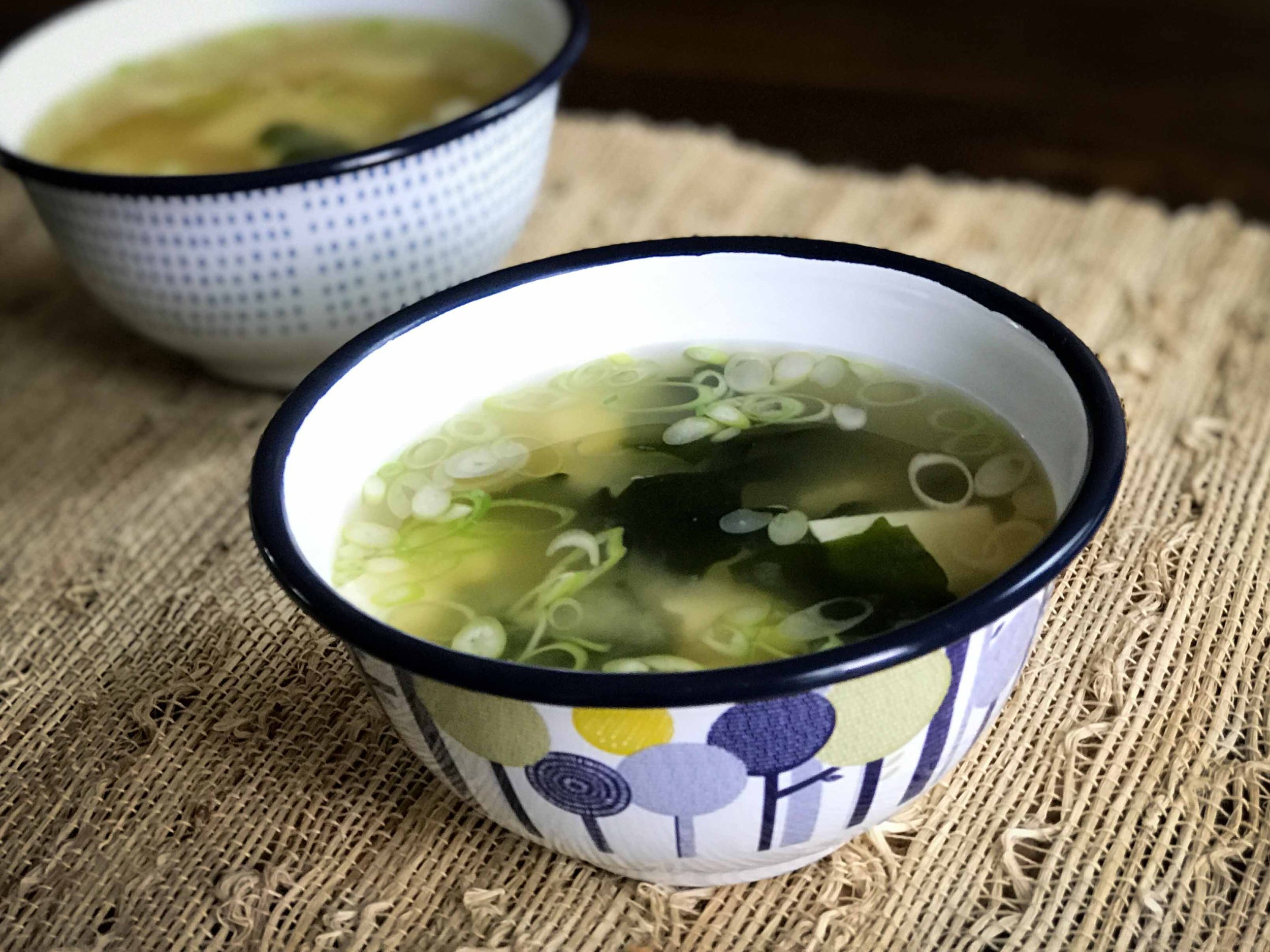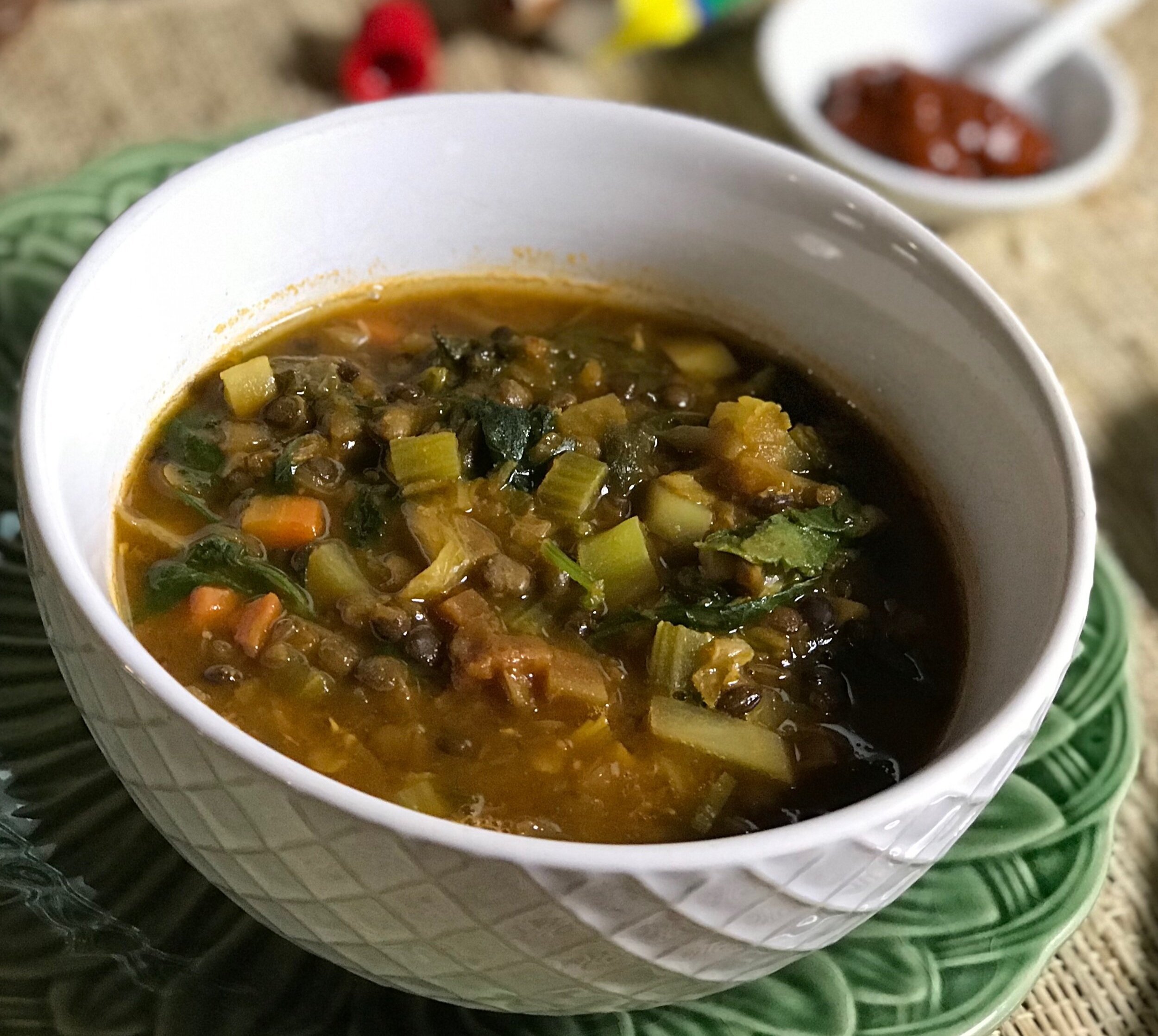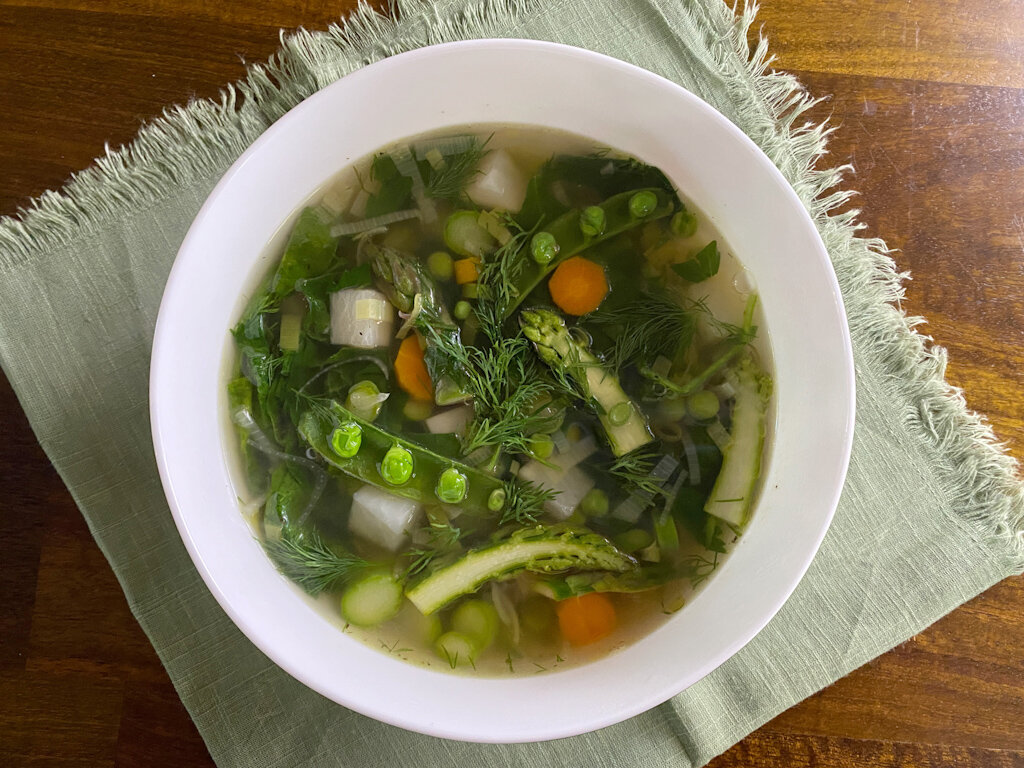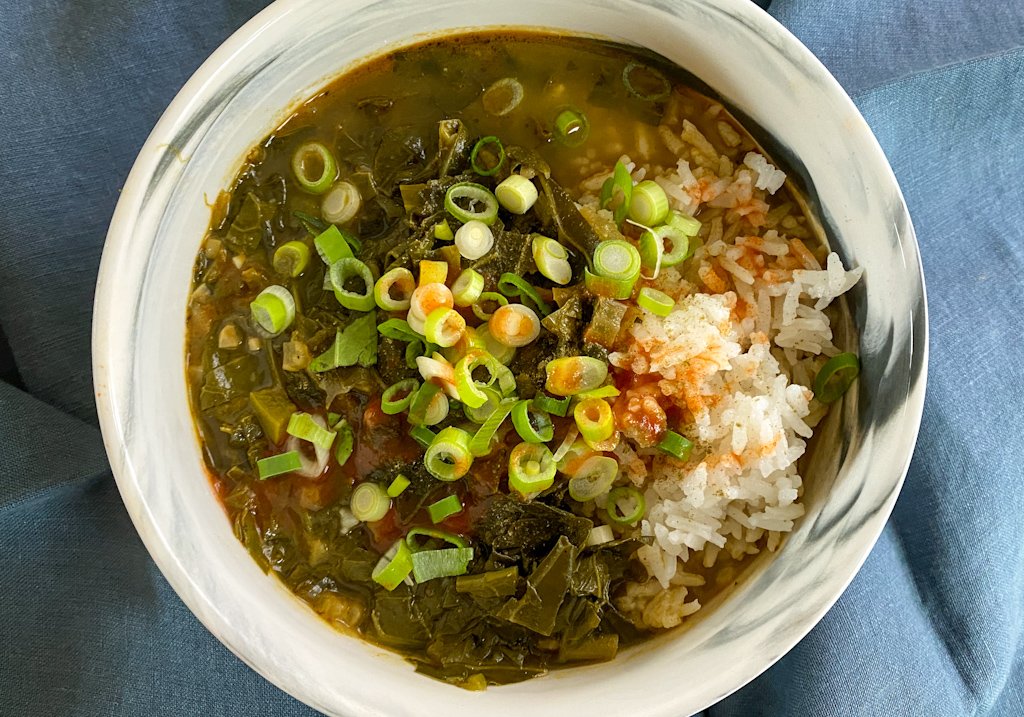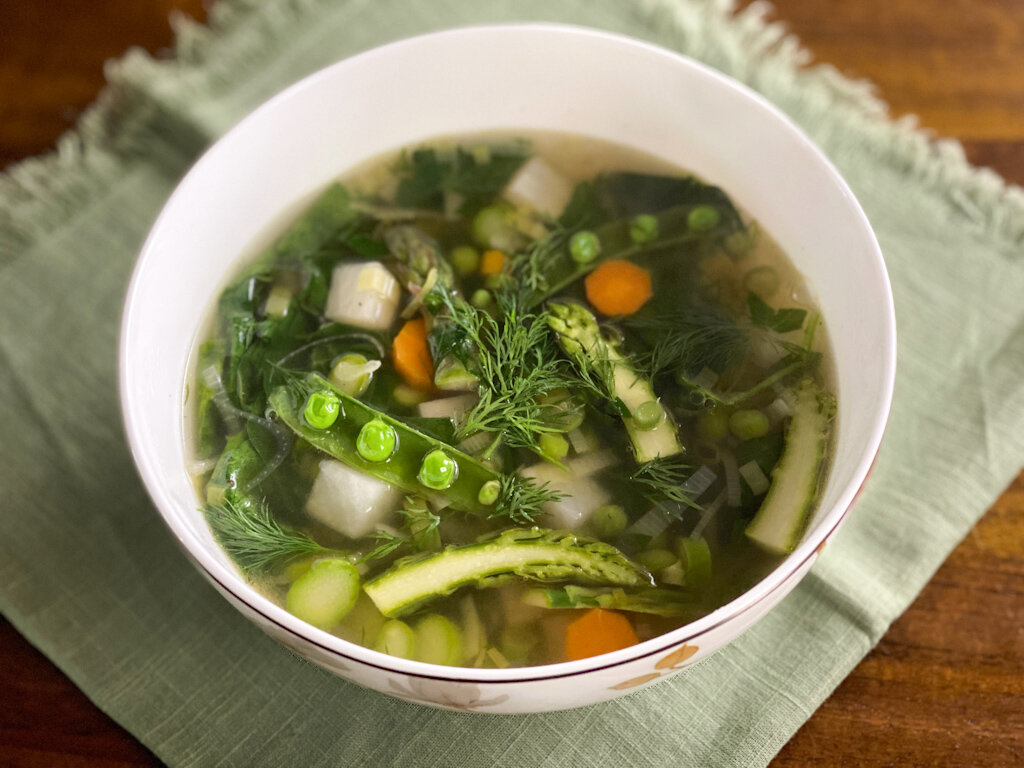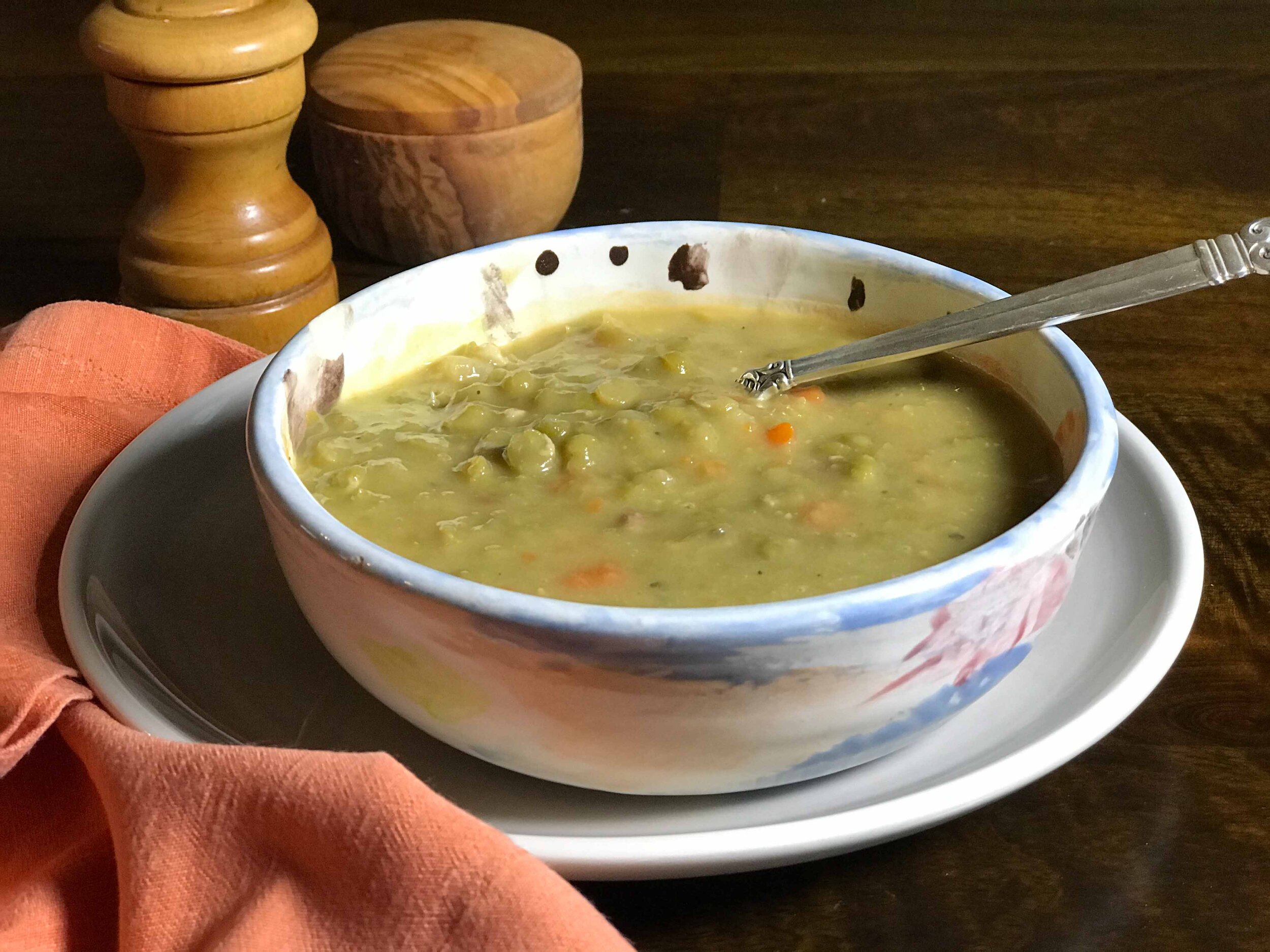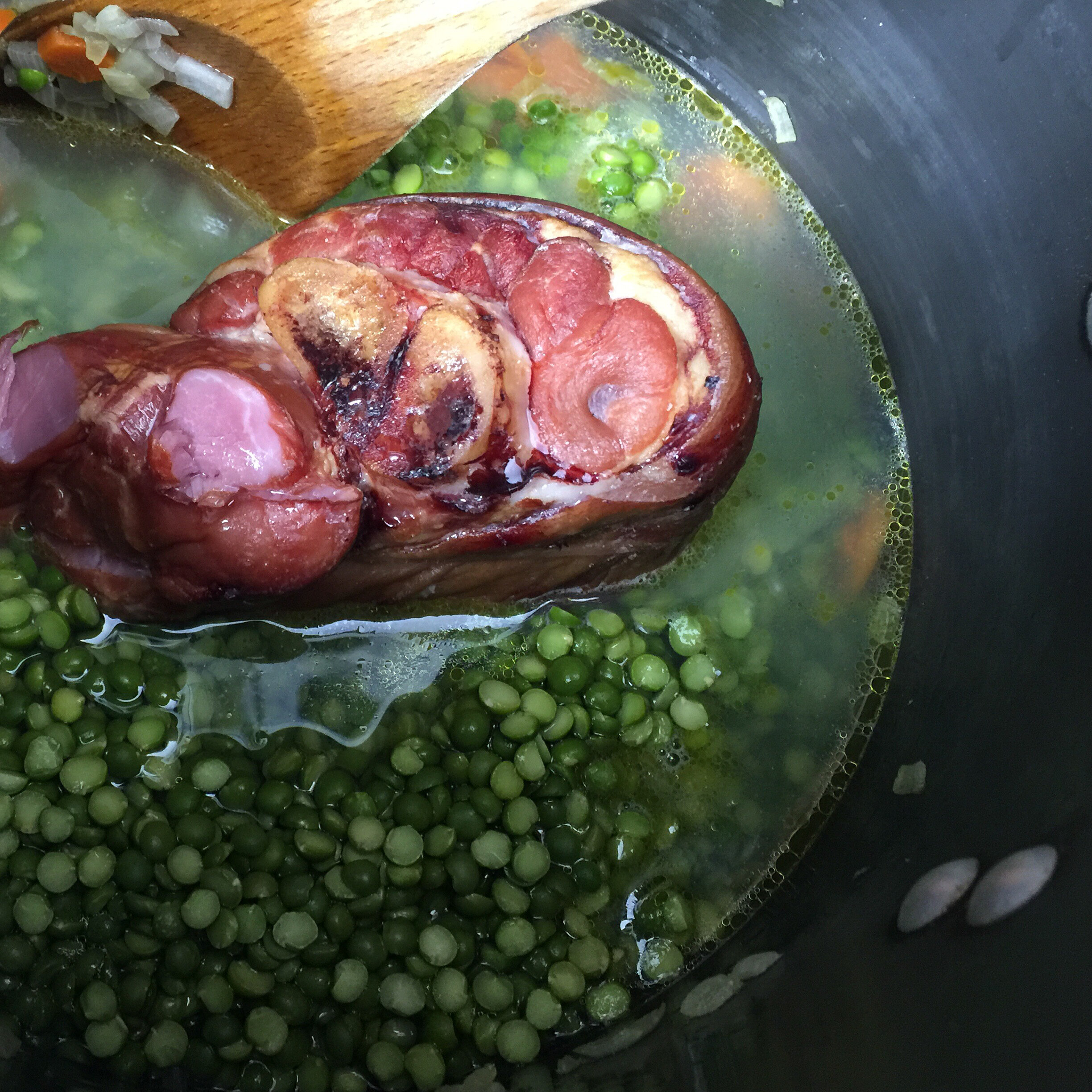Turkish cacik — chilled yogurt and cucumber soup with mint and dill
By Leslie Brenner
When the weather is sizzling hot, there’s nothing like a cold soup to refresh and restore.
Here are my five current faves. Two are vegan (the gazpachos); three are made without even turning on the stove (the gazpachos and the cacik). All are vegetarian. The borscht can also be vegan, if you leave off the sour cream stirred in at the end.
Cacik — Turkish Yogurt and Cucumber Soup
I love the traditional Turkish yogurt-and-cucumber soup known as cacik, first because it’s delicious and simple, but also because it you can make it in no time flat, by hand, without turning on the stove or even plugging anything in. Just whisk some yogurt to smoothness, add cucumber you’ve grated on a box grater, and whisk it together with chopped fresh mint and dill, a little white wine vinegar, olive oil, salt and pepper. Drop an ice cube in each bowl, top with more herbs (if you like) and enjoy.
Making cacik is a decidedly low-tech endeavor.
Gazpacho Sevillano
Have some gorgeous ripe tomatoes? Seville’s classic tomato gazpacho is the play. Its beautiful sherry tang makes it super refreshing.
The Greenest Gazpacho
Easy, herbal and honestly pretty dreamy, this green vegan gazpacho gets body from raw almonds or cashews.
My Mom’s Cold Beet Borscht
This is one of my favorite summer meals — my mom’s recipe. It’s lightly sweet, tangy and transporting.
Chilled Minted Pea Soup
Our Ridiculously Easy Mint Pea Soup — based on a traditional French potage Saint Germain — is normally served hot, as shown above. Leave off the crème fraîche garnish and chill it, and it’s fabulous eaten cold.

